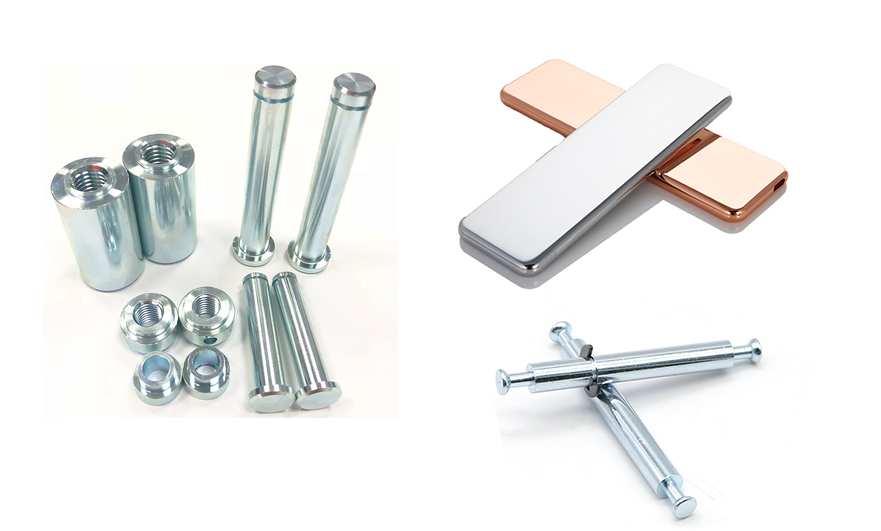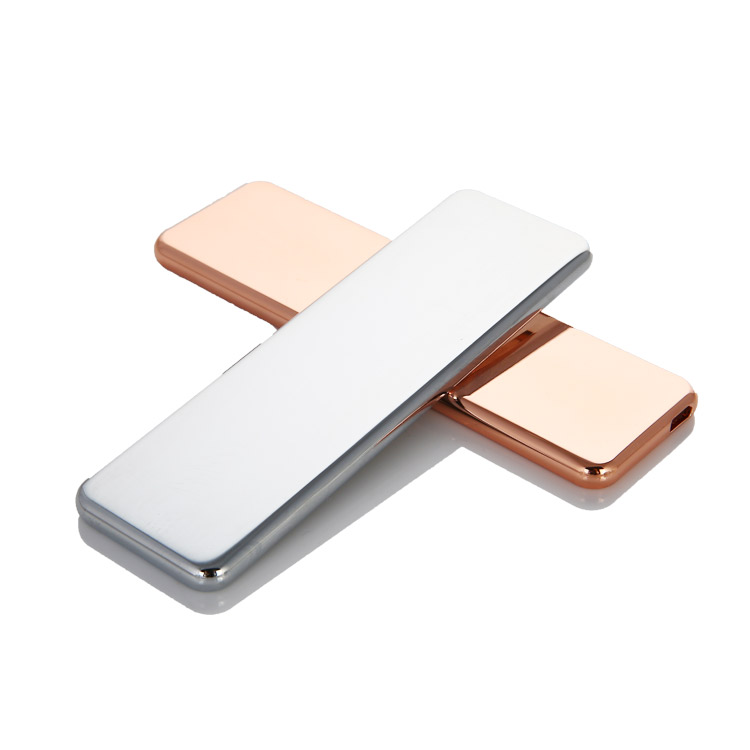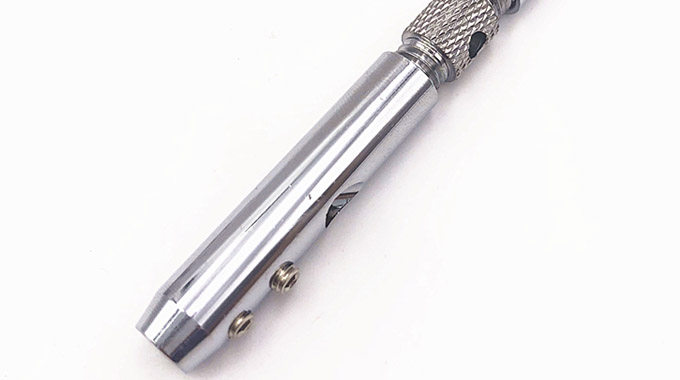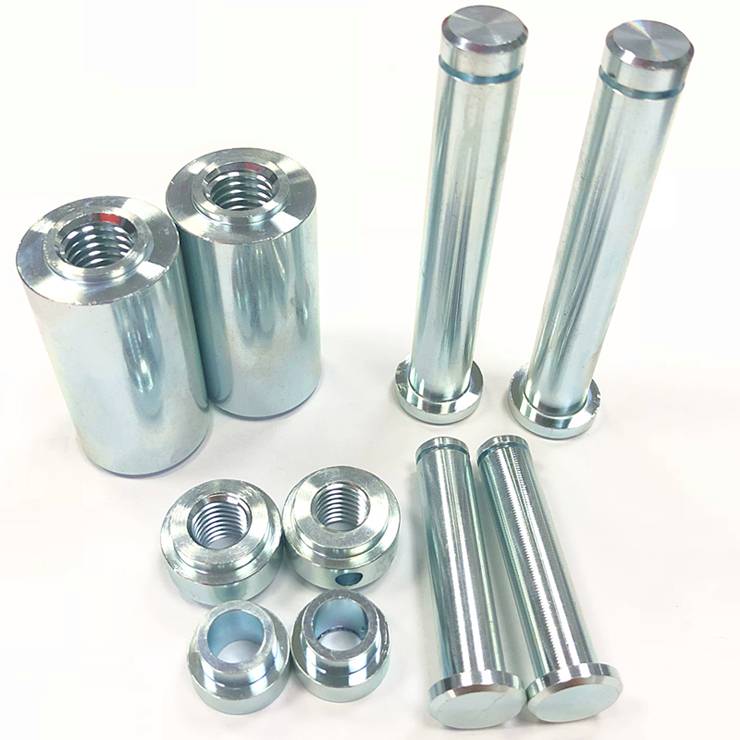15 years one-stop China custom CNC machining parts factory
 1733 |
Published by VMT at Dec 20 2022
1733 |
Published by VMT at Dec 20 2022
In industrial design, we often use the electroplating process. First, let's understand what electroplating is:
Electroplating is the process of plating a thin layer of other metals or alloys on the surface of certain metals using the principle of electrolysis. It is a process of using electrolysis to attach a layer of metal film to the surface of metal or other materials to prevent metal oxidation ( Such as rust), improve wear resistance, electrical conductivity, reflective properties, corrosion resistance (copper sulfate, etc.) and enhance the appearance.
Common electroplating is divided into specific processes such as copper plating, gold plating, silver plating, chrome plating, nickel plating, and galvanizing. Among them, galvanization, nickel plating, and chrome plating are the most widely used in the manufacturing field, so what is the difference between the three?

Chrome Plating
Definition: Chromium is a kind of silver-white metal with microstrip blue. The method of plating a layer of chromium on metal CNC machining parts or some non-metal parts by electrolytic or chemical methods is called chrome plating.

Features
There are two kinds of chrome plating, the first one is for decoration, the appearance is bright, the abrasion resistance is better, the anti-rust ability is not as good as galvanized, and it is worse than oxidation; the second one is to increase the hardness and wear resistance of metal parts, etc. is the functionality of the part.
Chromium is very stable in humid atmosphere, alkali, nitric acid, sulfide, carbonate solution and organic acid, and is easily soluble in hydrochloric acid and hot concentrated sulfuric acid. Under the action of direct current, if the chromium layer is used as an anode, it is easily soluble in caustic soda solution.
The chromium plating layer has a high hardness in a wide range of 400~1200 HV, depending on the composition of the plating solution and processing conditions. The chromium plating layer has good heat resistance, and its gloss and hardness do not change significantly when heated below 500°C. Oxidation and discoloration begin above 500°C, and hardness begins to decrease above 700°C. Chromium coating has a small coefficient of friction, especially the lowest coefficient of friction among metals. Therefore, the chrome-plated layer has excellent wear resistance.
Hard chrome plating is a better way to increase surface hardness. Hard chrome plating is generally used on machines used under high temperature conditions. The main purpose is bright surface, beautiful appearance, and anti-rust.
Hard chrome plating is a hard chrome plating process. The surface of various substrates is covered with a thick chromium coating, the thickness of which is more than 20 μm, and the properties of chromium are used to improve the hardness, wear resistance, heat resistance, corrosion resistance, and other properties of the parts.
Shortcoming
Chromium is hard, brittle, and easily falls off, especially when subjected to alternating impact loads. And has porosity. Metal chromium is easily passivated in the air to form a passivation film, thus changing the potential of chromium. Therefore, chromium becomes a cathodic coating on iron.
Application
1. Protection - chrome plating, that is, decorative chrome. The coating is thin, bright and beautiful. Usually used as the outer layer of multi-layer plating. In order to achieve the purpose of protection when producing partial chrome plating, the zinc base or steel base is coated with a thick intermediate layer, and then coated with 0.25 to 0.5 μm of chromium in the intermediate layer. A silver-blue mirror sheen is obtained when decorative chrome is plated over polished chrome. The advantage is that it does not change color for a long time in the atmosphere. This paint is widely used for the protection and decoration of cars, bicycles, lamps and everyday hardware.
2. Chromium processing, various materials for cutting and drawing tools, molds, bearings, shafts, instruments, high hardness, such as gears, have wear resistance. It can also be used to repair dimensional tolerances on worn parts. Compared with 2003 and 4800μm, the thickness of hard chrome coating can be determined according to needs. Hard chromium coatings of steel components do not require an intermediate coating, but different intermediate coatings can be used if there are special requirements for corrosion resistance.
Extended knowledge:
1- Electroplating production is mainly polluted by heavy metals in sewage and sewage. The state has strictly controlled the expansion of the electroplating industry and reduced it year by year.
2- my country's electroplating processing is mainly zinc plating, copper plating, nickel plating, and chrome plating, of which zinc plating accounts for 50%, and copper, chromium, and nickel plating account for 30%.
3- If the purpose is to prevent rust, zinc or cadmium plating can be used; if the focus is to prevent wear, nickel or chrome plating is the best choice.
Nickel plating: The method of plating a nickel layer on metals or some non-metals by electrolysis or chemical methods is called nickel plating.

Features
Nickel has good chemical stability in the atmosphere and lye, and is not easy to change color. It is oxidized when the temperature is above 600°C. It dissolves slowly in sulfuric acid and hydrochloric acid, but is easily soluble in dilute nitric acid. It is easily passivated in concentrated nitric acid and has good corrosion resistance. Nickel plating has high hardness, is easy to polish, has high light reflectivity and can increase aesthetics.
Shortcoming
Nickel coating has high hardness, simple polishing, and high light reflection aesthetics. Its shortcoming is that it is porous. In order to overcome this shortcoming, multi-layer metal plating can be used, and nickel is the middle layer. Nickel is a cathodic coating on iron and an anodic coating on copper.
Application
Usually in order to prevent corrosion and increase the appearance, it is generally used to protect the decorative coating. Nickel plating on copper products is ideal for anti-corrosion, but because nickel is more expensive, copper-tin alloy plating is often used instead of nickel plating.
Galvanized
Galvanizing plays a certain role in aesthetics and rust prevention. Referring to surface treatment technology, a galvanized layer is applied to the surface of metal, alloy or other materials.

Zinc is relatively stable in dry air and is not easy to change color. Reacts with oxygen or carbon dioxide in water and humid environment to form zinc oxide or alkaline zinc carbonate film to prevent zinc oxidation and play a protective role.
Zinc is susceptible to corrosion in acids, alkalis, and sulfides. The galvanized layer is generally subject to passivation treatment. After passivation in chromic acid or in chromate solution, the anti-corrosion ability is greatly enhanced because the formed passivation film is not easy to interact with humid air. For spring parts, thin-walled parts (wall thickness <0.5m) and steel CNC machining parts requiring high mechanical strength, dehydrogenation must be carried out, and copper and copper alloy parts may not be dehydrogenated.
The cost of galvanizing is low, the processing is convenient, and the effect is good. The standard potential of zinc is relatively negative, so the zinc coating is an anodic coating for many metals.
Application
Galvanizing is widely used in atmospheric environment and other good environments. Screws, circuit breakers, industrial supplies, etc., but should not be used as friction parts.
Cadmium plating
Features
For parts in contact with marine atmosphere or seawater and in hot water above 70°C, the cadmium coating is relatively stable, has strong corrosion resistance, and good lubricity. It dissolves slowly in dilute hydrochloric acid, but is very easy to dissolve in nitric acid. , is insoluble in alkali, and its oxides are also insoluble in water.
The cadmium coating is softer than the zinc coating, the hydrogen embrittlement of the coating is small, and the adhesion is strong, and under certain electrolytic conditions, the cadmium coating obtained is more beautiful than the zinc coating. However, the gas produced by cadmium when it melts is poisonous, and the soluble cadmium salt is also poisonous.
Under normal conditions, cadmium is a cathodic coating on steel, and an anodic coating in oceanic and high-temperature atmospheres.
Application
It is mainly used to protect CNC parts from the atmospheric corrosion of seawater or similar salt solutions and saturated seawater vapor. Cadmium plating is used for many aviation, marine and electronic industry parts, springs, and threaded parts. It can be polished, phosphated and used as a paint primer, but it cannot be used as a tableware.
When purchasing self-tapping screws, many purchasers only have requirements for the surface color of screw fasteners and the performance of screws. Many purchasers do not pay attention to the surface treatment of screws and why these surface treatments are required and do not know. Here is a brief introduction to you:
1. The difference:
1) The appearance color is different.
2) Galvanized appearance is silvery white.
3) The appearance of nickel plating is silvery white and yellowish.
4) Chrome plating is divided into decorative chrome and hard chrome, and the appearance is bright white and bluish.
5) The appearance of cadmium plating is silvery white and grayish.
2. Different definitions
1) Galvanizing refers to a surface treatment technology that coats a layer of zinc on the surface of metals, alloys or other materials for aesthetics and anti-rust effects.
2) The method of plating a layer of nickel on metal or some non-metal by electrolysis or chemical method is called nickel plating.
3) Chromium is a silver-white metal with a slight blue color. The method of plating a layer of chromium on metal or some non-metal by electrolytic or chemical methods is called chrome plating.
3. Different Characteristics
1) The cost of galvanizing is low, the corrosion resistance is average, and the color is blueish silvery white.
2) Nickel plating is beautiful, can be used for decoration, the price is high, the process is slightly complicated, and the color is silvery white and yellow.
3) There are two types of chrome plating, the first one is for decoration, the appearance is bright, the abrasion resistance is better, the anti-rust ability is not as good as galvanized, and it is worse than oxidation; the second one is to increase the hardness and wear resistance of metal parts, etc. , which is the functionality of the part.
4. Different uses, everyone’s CNC machining parts have different surface requirements and application performance, different surface treatments are suitable for all walks of life, and the cost is also different.
The most basic difference between the three plating types
1: Chrome plating mainly improves surface hardness, aesthetics and rust resistance. Chromium coatings have good chemical stability. It is suitable for alkalis, sulfides, nitric acid and most organic acids, but is soluble in hydrohalogen acids (such as hydrochloric acid) and hot sulfuric acid.
2: Nickel plating is mainly wear-resistant, corrosion-resistant, and rust-proof, and is generally thinner.
3: Galvanized is mainly beautiful and rust proof. Zinc is a reactive metal that reacts with acids, has poor corrosion resistance and is the cheapest of the three.
The above is the difference between chrome plating, nickel plating and galvanization, I hope it will be helpful to you.
